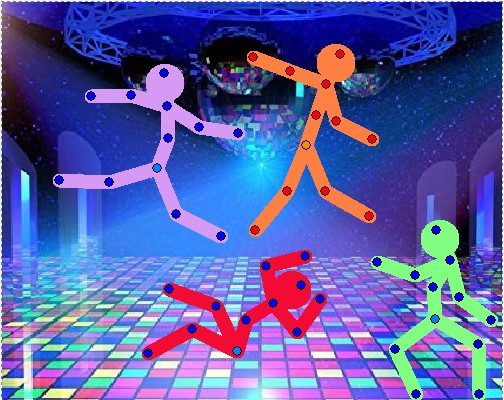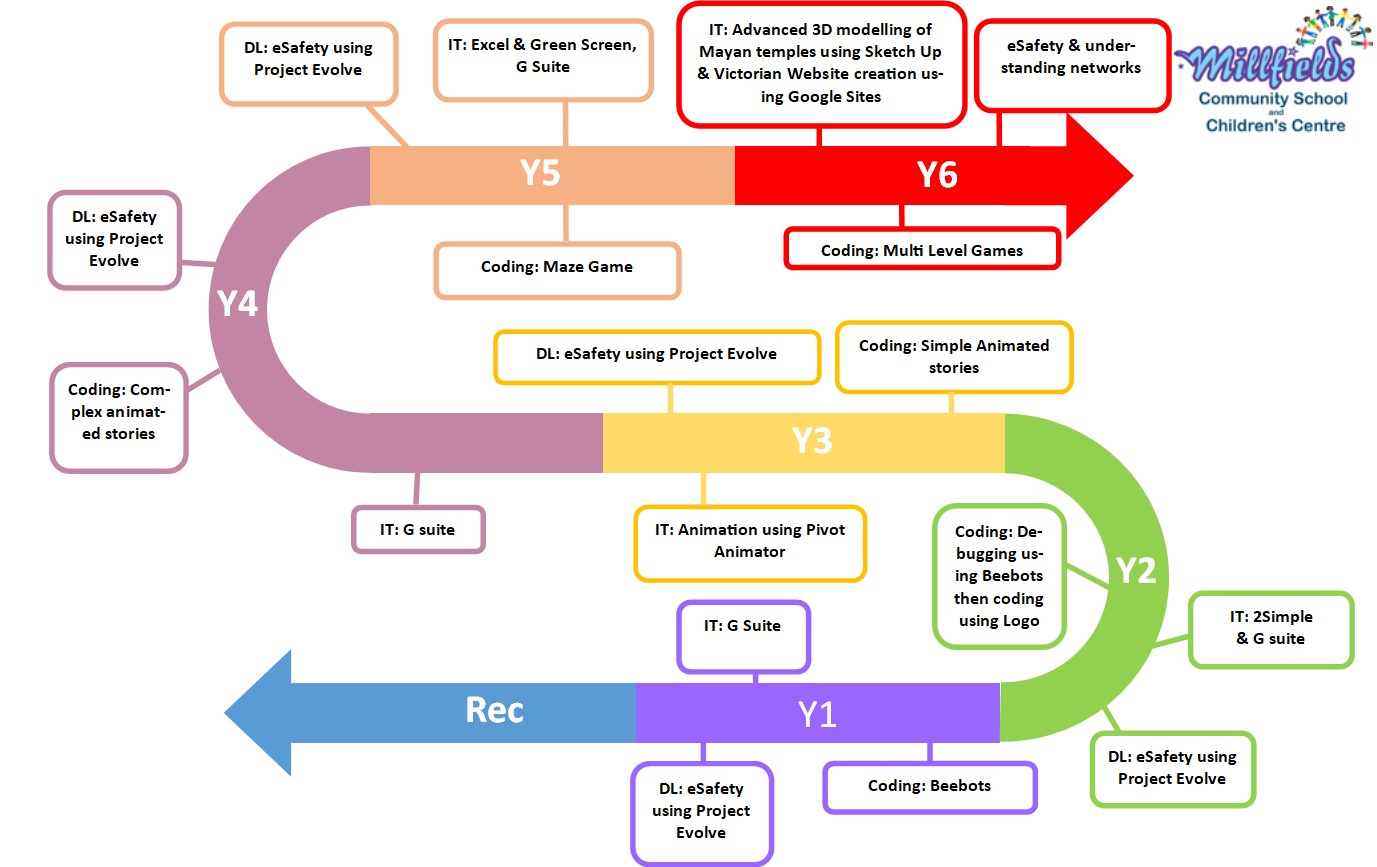Computing
Computing at Millfields


At Millfields Community School, we follow the New National Curriculum for Computing, delivering a high-quality computing education to create active participants in a digital world. Informed by developments in ICT and best practice nationally, we teach pupils to use their computational and creative thinking to solve problems; to use ICT to communicate effectively and to become digitally literate, preparing them for their future place in the twenty-first-century workplace.
Our computing curriculum covers three main strands:-
COMPUTER SCIENCE which focuses understanding alogorithms and using them to design, write and debug programs. It also covers understanding how computer networks work.
INFORMATION TECHNOLOGY which is using search technologies and software to research, create, store, organise, collect, analyse, evaluate and present data and content
DIGITAL LITERACY is about the safe and responsible use of technology, including recognising its advantages for collaboration or communication. It teaches the children about search technologies and how to be discerning when evaluating digital content. Furthermore, the esafety elements teach children about: recognising acceptable/unacceptable behaviour online; understanding what precautions to take using the internet and on social media; and what to do/where to go when they have concerns about content and contact.
Working with world renowned primary computing education consultant John Harwood, Millfields has reworded Government objectives to make them easier to understand and organised them according to strand and key stage. Click here to read. To use this document, please contact the school.
Computing students at Millfields
Computing is a very broad subject, encompassing many different areas. At its core, it is the use of computer based technologies (hardware/ software/ apps) to achieve a specific goal.
Computer scientists design new software, solve computing problems and develop different ways to use technology. However, whatever they’re doing, all computer scientists rely on ‘computational thinking’.
To be good at Computing at Millfields we should:
-
be creative and be prepared to think ‘outside the box’!
-
analyse and understand problems
-
solve problems in a systematic way
-
be a stickler for accuracy
-
be patient and be prepared to try lots of possible solutions
-
be good at working in a team
Computing Big Ideas & Knowledge Categories
(Click to enlarge)
How is Computing taught at Millfields
This diagram shows the progression of computing through the keystages:
(Click to enlarge)
This is how children's skills in the three main areas of computing progress through their school career:
(Click to enlarge)
What Apps & Software do we use at Millfields?


Information technology is taught throughout the curriculum. Examples of apps and software used, including some that are industry standard, include:
Word, Powerpoint, Publisher, Excel, Google Classroom / Docs / Slides, Keynote, Pages, iMovie, DoInk Green Screen, Pivot Animator, Garage Band, Book Creator, Sketch - Up, Scratch, Logo
Coding is taught mainly through using BeeBots, Logo and Scratch which is an online app, used in over 150 countries, developed by the world famous MIT in the USA. Scratch uses code blocks that can easily manipulated to create incredible sophisticated apps and games.
Computing at home
We encourage children to continue developing their skills at home. In fact, you can click the logo to get started now!
Its advantages include being completely free and being easily accessible from home. Crucially, this allows for children being able to easily develop their projects at home. As you can appreciate, timetabling and resources can be limitations in all schools. Using Scratch removes those barriers - we have seen children develop their school projects into incredible apps and games that a commercial studio would be proud off! Furthermore, children can push their coding to the next level by looking at the code used for existing projects and then developing it further - a process called remixing. Finally, projects are easily published on the internet.
Y6 Scratch projects from from Jonas and Saul & Gabriel. Please click to play:







